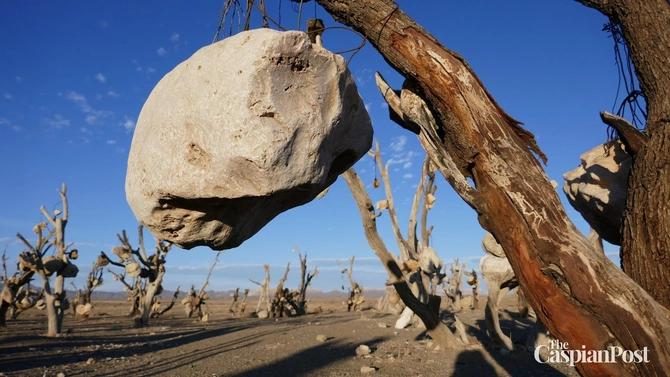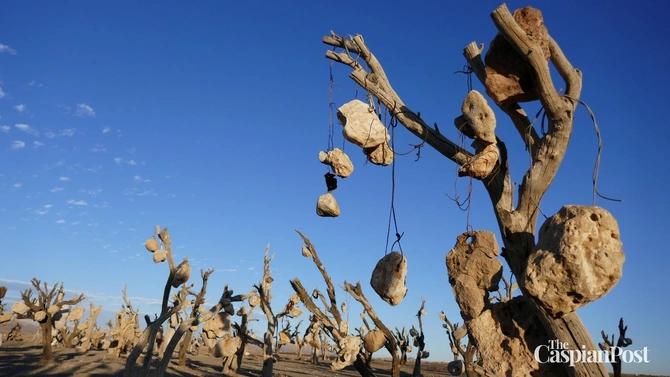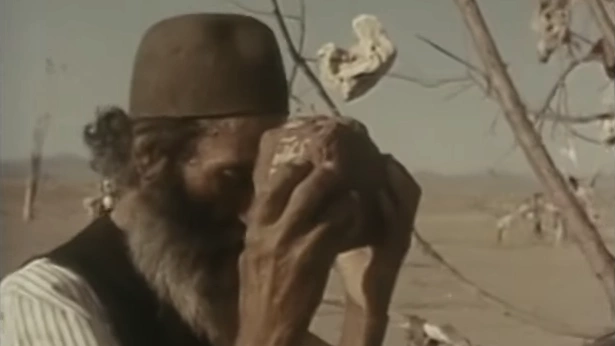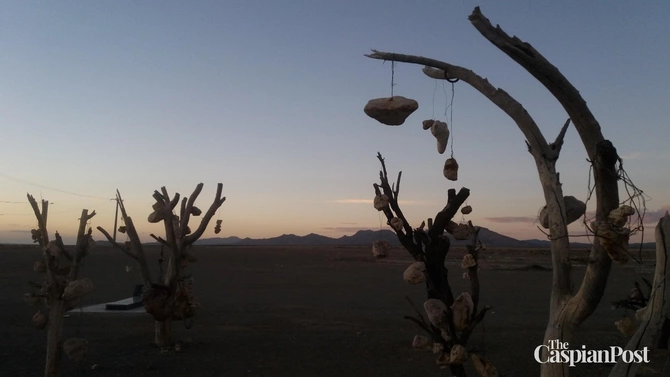
A surreal 1976 film about a deaf ‘prophet’ creating an absurdist ‘Stone Garden’ in the middle of Iran’s semi-desert turns out to be loosely based on truth. Its star was the creator of just such a ‘garden’ where lifeless trees produce heavy stone fruit. The Caspian Post’s Mark Elliott went to have a look at the lonely site, which remains mesmerizingly intact.
Image: Mark Elliott
Made in 1976, the Iranian film Bāgh-e sangi tells the off-beat tale of a

The sheer absurdity of the place and the shepherd’s devotion to its creation lead locals to believe that he might be a divinely inspired prophet. The film ended up taking silver at the 26th Berlin Film Festival.

Image: Mark Elliott
To my surprise, however, it turns out that the Stone Garden really exists. It’s not exactly a place one stumbles across. Even as one drives along the relatively featureless Sirjan-Baft highway in south-central Iran, the garden is not visible until you turn off the main asphalt.

The site is easy to miss off the quiet if well-paved Baft road some 45km from Sirjan. Image: Mark Elliott
However, the place was marked with reasonable accuracy on my map-app, so I decided to take a look. We pulled up just before sunset in this eerily lonely place. Arriving, it was at once evident that the place must have taken enormous investments of time and effort. And yet it was so wantonly obscure, uncommercial and apparently unprotected.

Image: Mark Elliott
There was nobody in situ to question about the place, so I simply strolled and stared and scratched my head. Perhaps this kind of confused meditation was the whole idea? Since my visit, however, various sources have given me different versions of the garden’s real story.
Far from being a film set for the movie, it seems the movie was made about the pre-existing ‘garden.’ The star of the film was none other than the man who had hung the stones himself, Darvish Khan Esfandiyarpour.

Born around 1917 to a family of modest, land-owning peasant farmers, Esfandiarpour was semi-deaf and essentially unable to speak. He was spiritually minded and conscientious. By his 40s, he had planted some of the family’s grazing lands with fruit trees. However, the anti-feudal Pahlavi Land Reforms of 1960-1963 now threatened his life’s work. The ‘art’ of creating the Stone Garden was his way of both commemorating events and protesting their unfairness towards people like himself without deviating from a Sufi-esque attitude of detachment.

Esfandiarpour’s black marble gravestone lies on the edge of his creation. Image: Mark Elliott
Darvish Khan lived to the ripe old age of 90 and continued tending the garden until just before his death. He is buried in this extraordinary garden that continues to ask his subtly whispered questions.
Share on social media
A surreal 1976 film about a deaf ‘prophet’ creating an absurdist ‘Stone Garden’ in the middle of Iran’s semi-desert turns out to be loosely based on truth. Its star was the creator of just such a ‘garden’ where lifeless trees produce heavy stone fruit. The Caspian Post’s Mark Elliott went to have a look at the lonely site, which remains mesmerizingly intact.